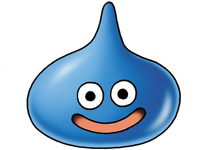By Nelson Schneider - 02/18/18 at 03:58 PM CT
While the Nintendo Switch officially launched in March 2017, we here at MeltedJoystick were relatively dubious and on-the-fence about Nintendo’s latest platform until late Summer/early Autumn when the library started to flesh out. I received a Switch as a Yule gift in 2017, and spent the better part of two months putting it through its paces with a pair of games I was really excited about – one first-party and one by a “AAA” third-party. Let’s take a look at how the Switch fared via some tabulations of Pros and Cons!
The Hardware
Pros
+The Joycons with Grips are really nice controllers when used as a pair
+Joycon batteries last roughly a week on a single charge
+HD Rumble and Motion Controls work really well
+Impressive performance for smartphone-based hardware
Cons
-The Joycons with Grips are really garbage controllers when used individually for multi-player
-The asymmetrical layout of the Joycons places the right analog stick too low for comfort
-There’s no way to remove the wrist straps from the Joycon Grips short of surgery
-The system’s battery only lasts a couple hours per charge while gaming
-The Dock feels very flimsy, and the Switch doesn’t fit into it snugly
-The SD card slot is hard to find under the kickstand, and the kickstand is hard to open
-The Game Card slot cover feels cheap and like it’s ready to break off all the time
The Switch hardware itself is a mix of the traditional Nintendo quality fans have come to expect and some uncharacteristic flimsiness and cut corners. The Joycon controllers are a fantastic take-two on the Wiimote paradigm, but this sadly means that original Wiimotes are no longer supported. Regardless, the enhanced features, such as HD Rumble and the improved motion controls, not to mention the huge battery life, make a pair of Joycons an incredibly pleasant way to interact with game software, even if the right Joycon’s layout is a bit tortured. I also never experienced any of the oft-reported connection/syncing issues with my Joycons. Unfortunately, the glory of Joycons only applies to a pair of Joycons working in tandem. Splitting them up for two players, each using a single sideways Joycon, feels very uncomfortable, as each Joycon is far too small to be held with two normal-sized human hands. The ever-present wrist straps Nintendo seems to love are also a major sticking point with the Joycons, as there is no way to remove them short of disassembling the Grip adapters they’re attached to.
Stepping away from the controller, the Switch hardware performs quite well for a mobile-inspired, Tegra-based system, but the exterior housing is generally unimpressive and feels like one of the flimsier Nintendo products in recent memory. As a Dockable (not fully Console, not fully Handheld), the Switch has a poor battery life in undocked mode (which I only experienced once while attempting to eliminate so-called input lag during the hellish “Jump Rope Genius” challenge in “Super Mario Odyssey” [note: there was no input lag]). I never intended to undock my Switch very often, though, and I was disappointed to note the general lack of build quality in the Dock itself. It isn’t a particularly complex device: It’s just a plastic shell with a few cable passthroughs. Unfortunately, the Switch itself doesn’t fit snugly in the Dock, but rattles back and forth ominously. The Dock has no real weight or heft to it, which further makes docking/undocking or attaching/removing the Joycons to let them charge feel dangerous, like the whole thing could just jump off the shelf unexpectedly. This low build quality also affects the Switch itself to a limited extent, with particularly flimsy covers for both the micro-SD card slot and the Game Card slot. The SD slot is hidden under the Switch’s kickstand and puts up far too much resistance when trying to open it for the first time, while the Game Card slot doesn’t even have a hinge for its cover, but instead relies on some ‘flexible’ plastic that will no doubt see Game Card slot covers breaking off in droves once the hardware is a few years old.
The Software
Pros
+Physical Game Cards don’t install data to the internal storage
+The OS does not perpetually pester the user to go online
+So far, the games tested have not suffered from game-breaking bugs without patches
+The UI isn’t bloated with a bunch of social media, streaming, or advertising nonsense
+Sleep Mode is amazing
+The built-in screencapture capability is nice to have
+Switch is region-free
Cons
-Load times from physical Game Cards are pretty bad
-No way to backup save files
-SD uses a proprietary format
-Doesn’t keep track of time played in each game without an OS update
-Can’t be turned on/off fully with the Joycons
The Paleo-Switch Experiment is returning positive results so far, as an un-updated, fully-offline Switch doesn’t seem to have all that many software issues. Physically-purchased games don’t install data off their Game Cards onto the internal storage (as do games on PS4/XBONE optical discs), the OS is content to leave users alone and not bother them to go online constantly, the UI is slick and minimalist, and the two games I tested – “Super Mario Odyssey” by Nintendo and “Mario + Rabbids: Kingdom Battle” by Ubisoft – didn’t require updates or patches to be fully playable (though obviously the Ubisoft game had a number of minor glitches and crashes). I’d also like to point out that the Amazon seller from whom I bought “Kingdom Battle” actually sent me a European copy of the game with a PEGI logo instead of an ESRB logo. Fortunately, the Switch is fully region-free, so I had no problems playing my foreign game. The only real downside to the Switch’s treatment of physical Game Cards is the fact that initial loading times when booting up a game from the menu are pretty terrible.
Outside of the delightfully old-school way it treats physical games, the Switch has a fairly even mix of good and bad software features. The horrible load times when starting a game can be completely mitigated by use of Sleep Mode, which puts the hardware into a low-power state, much like a locked smartphone, and suspends any active game software as-is. I would have killed for a feature like this in the NES/SNES eras when my stamina for long gaming sessions capped out at half an hour and searching for a save point or losing a ton (from my perspective, at least) of progress were the only options. Sleep Mode is a bit of a double-edged sword, though, as it is impossible to fully turn the Switch “off” (or “on” for that matter) using the Joycons: It’s necessary to hold down a tiny button on the system itself.
The Switch also includes a native screencapture feature, which has a dedicated button on the left Joycon. It’s quick and easy to copy these screencaps onto an SD card… but there’s little point in doing so, as these SD cards use a proprietary format and can’t be used on any device other than their designated Switch. Even worse, it’s impossible to backup game save data at all. I assume Nintendo doesn’t want players to have any control over their game saves due to the fact that those files are the attack vectors that have been used to hack Nintendo consoles in the past. Still, this locked-down totalitarianism of the SD card slot and on-board game saves is completely unacceptable, as a single hardware failure can wipe out all of a player’s saves in all of their games. Nintendo needs to loosen their death grip in order to allow their customers to have peace of mind. And speaking of peace of mind, I really like how Steam and GOG keep track of how much time I spend on a given game (it makes it easy to include that tidbit in my reviews). The Switch also has this feature… but it was added after the fact in an OS update, so my Switch just dumbly tells me nothing when I look at my local user profile.
The Summary
Overall, the Switch is a fairly even mix of great features and terrible mistakes. While it doesn’t suffer from PC-ification nearly as badly as the 7th and 8th Gen consoles from Sony and Microsoft, it has plenty of Apple-fication instead, with locked-down user accounts and single-system SD cards that largely eliminate the purpose of having an SD card slot at all. The hardware definitely doesn’t live up to Apple’s standards, though, with a flimsy, heft-less Dock and shoddy slot covers on the Switch itself.
However, the important stuff – the stuff that gamers need to really worry about – is all good: The Switch has some great exclusive games and a wonderful new controller that takes everything positive about the Wiimote + Nunchuck combo of the 7th Generation and improves it. Even better, initial experimental findings reveal that it’s entirely possible to treat the Switch as a Paleo-Console, keeping it offline and un-updated, and not suffer any ill consequences, making Nintendo’s new ‘Dockable’ paradigm the closest thing we’re going to get to a traditional console experience from here on out. Stay tuned for future Paleo-Switch updates as more games trickle onto the market.
Comments
dbarry_22 - wrote on 03/02/18 at 01:45 PM CT
A couple minor thoughts.
I was wondering if you set up a user profile for the system or since you didn't connect to the internet you didn't bother. That may have stopped you from seeing your game play times. I don't know though, I updated the system the first time I turned it on.
Second, what do you think a SD card is exactly for? I see no problem having Nintendo have their own cards. it's a decent (all be it not perfect) way of stopping people from trying to load stolen games onto the thing. But really the purpose of cards instead of discs would be for portability. I wouldn't want some disc spinning around while I'm on the road with my Switch (aka PSP). It was a smart thing to do.
Lastly, I'm not sure what you consider to be a "horrible" loading time for a start up of a game. I mean when you compare it to a SNES yeah the loading time is significantly higher but ever since the PS2/Gamecube ERA every single system that exists (even PC) has noticeable initial load times. I don't think it's exclusive to physical media either on the Switch.
Lastly, I'm with you. Sleep mode is awesome. I can grab a controller and be playing the game I last had on in a matter of seconds where as the PS4 in rest mode still takes a minute or so for the system to boot up and get back into the game. Good job Nintendo.





